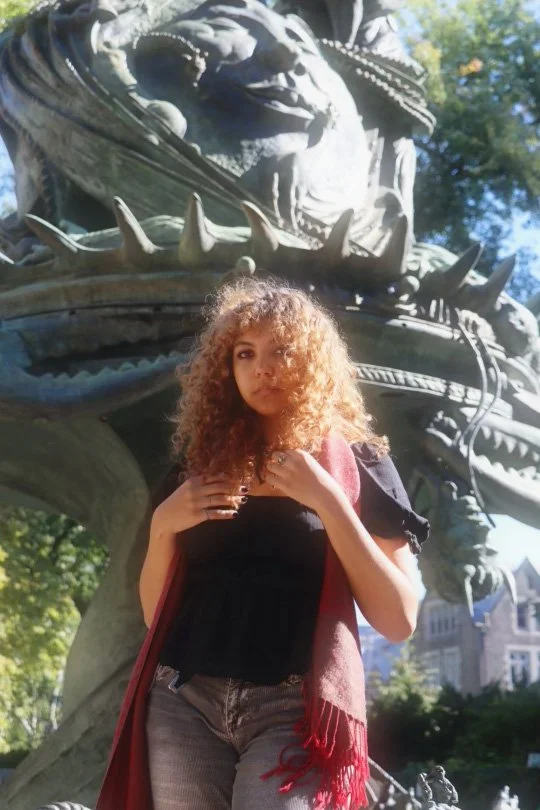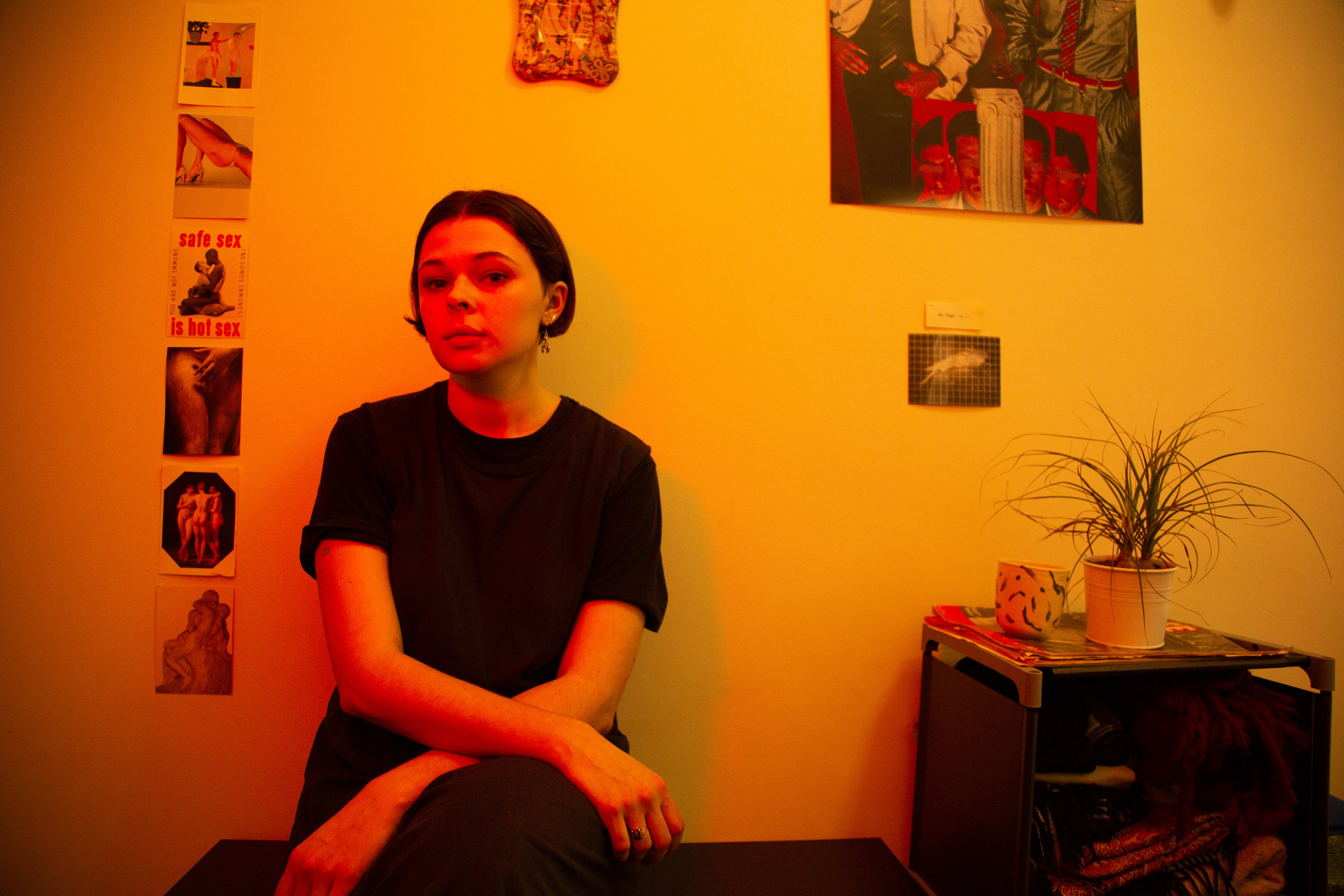

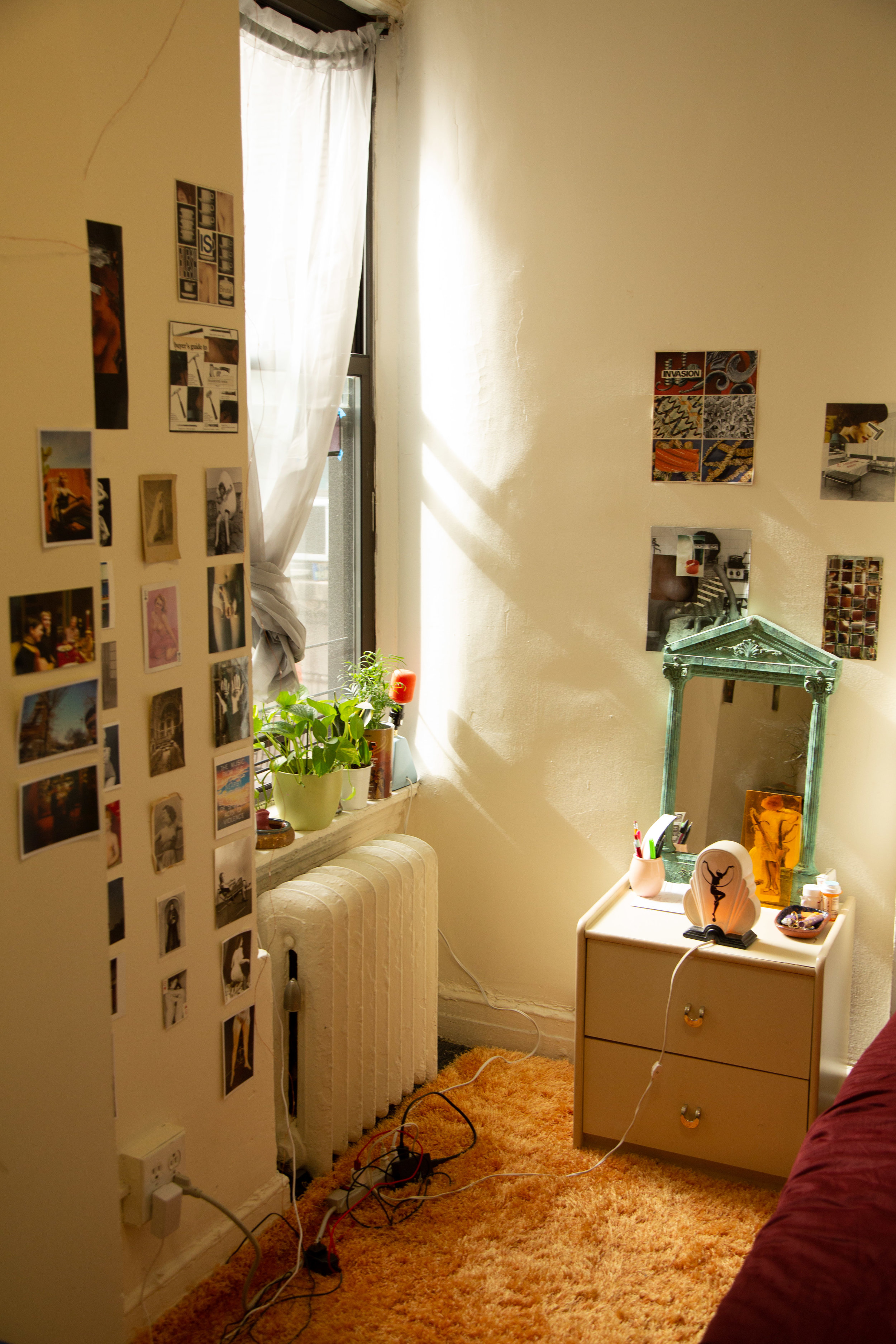
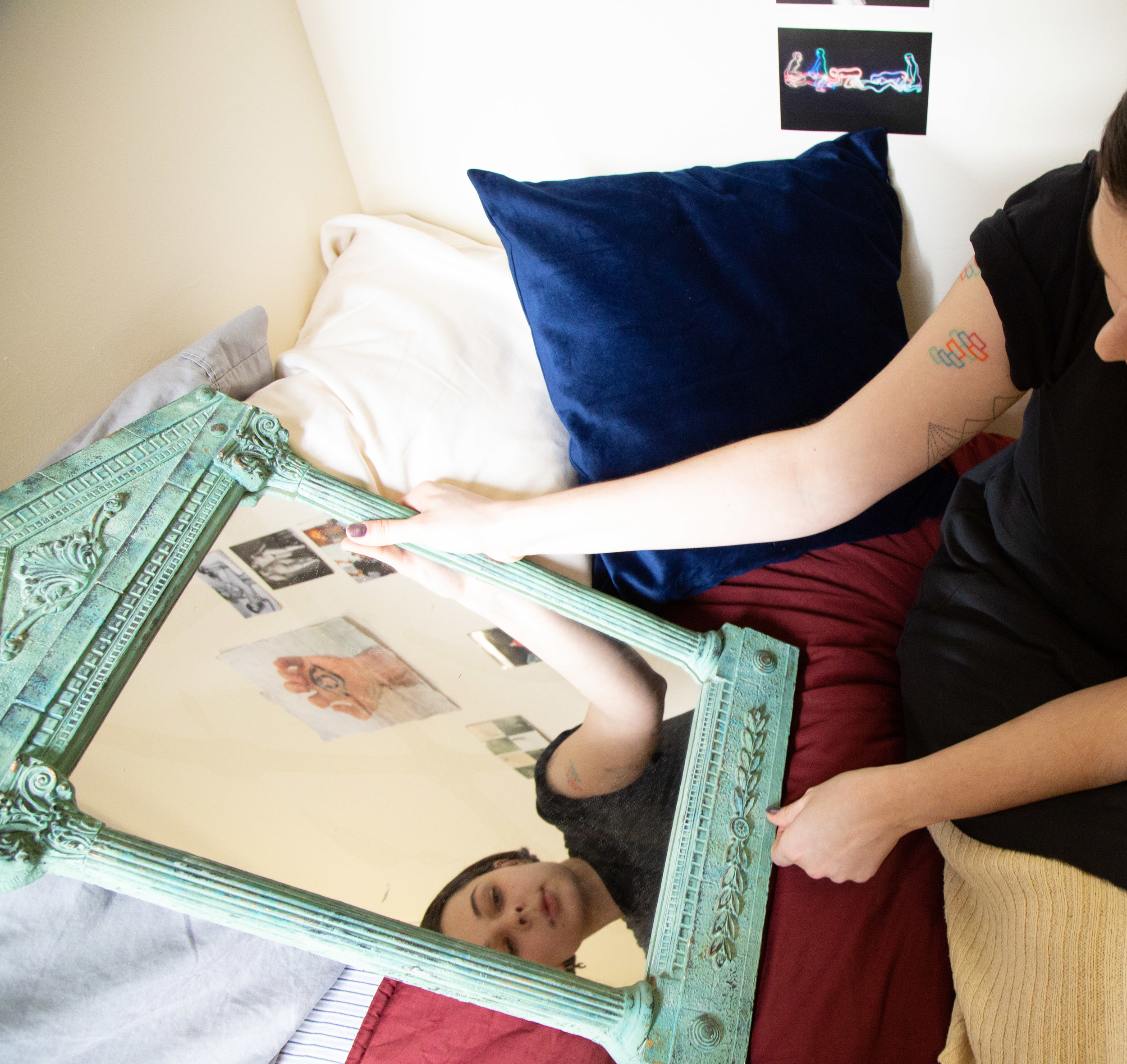
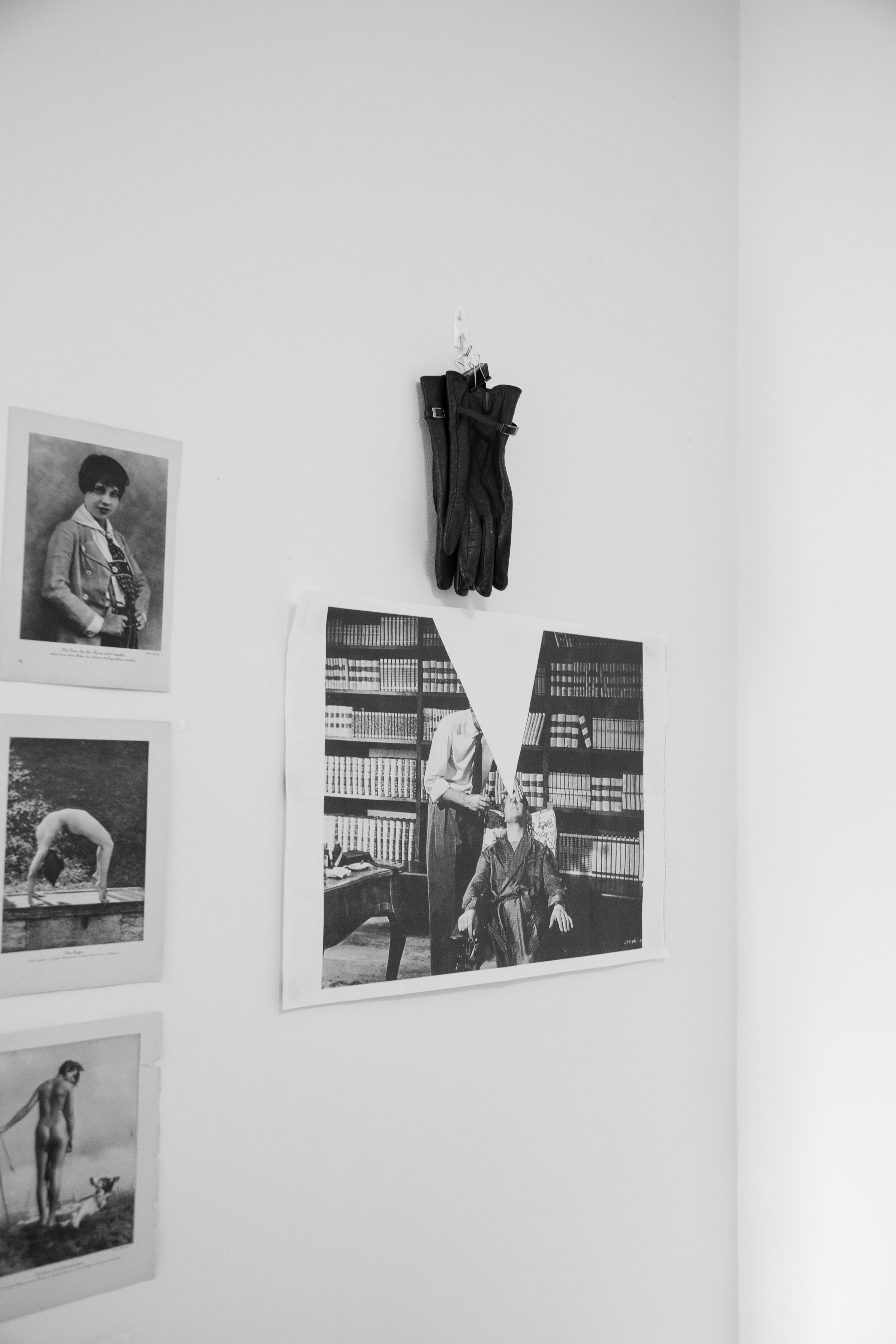
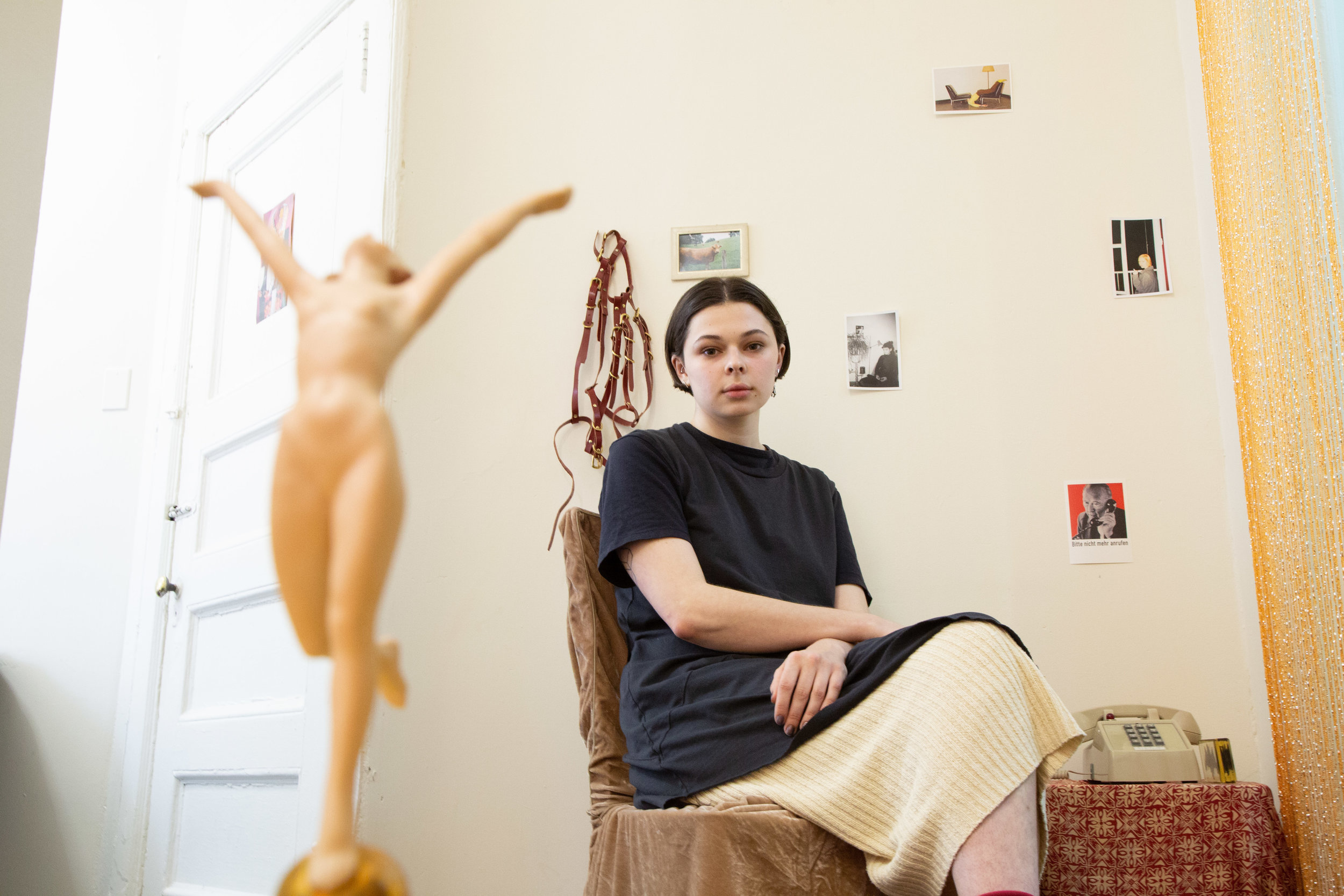
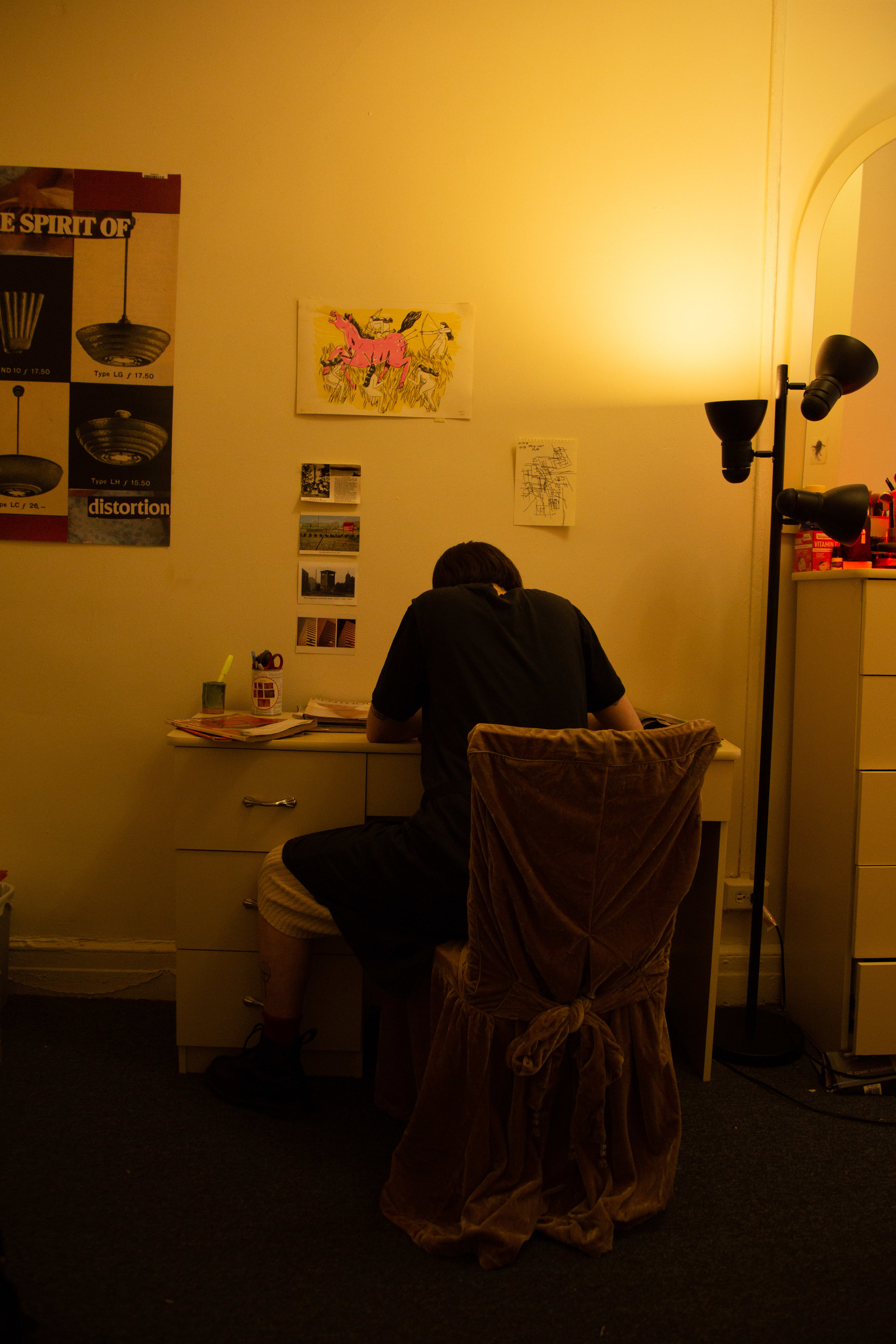
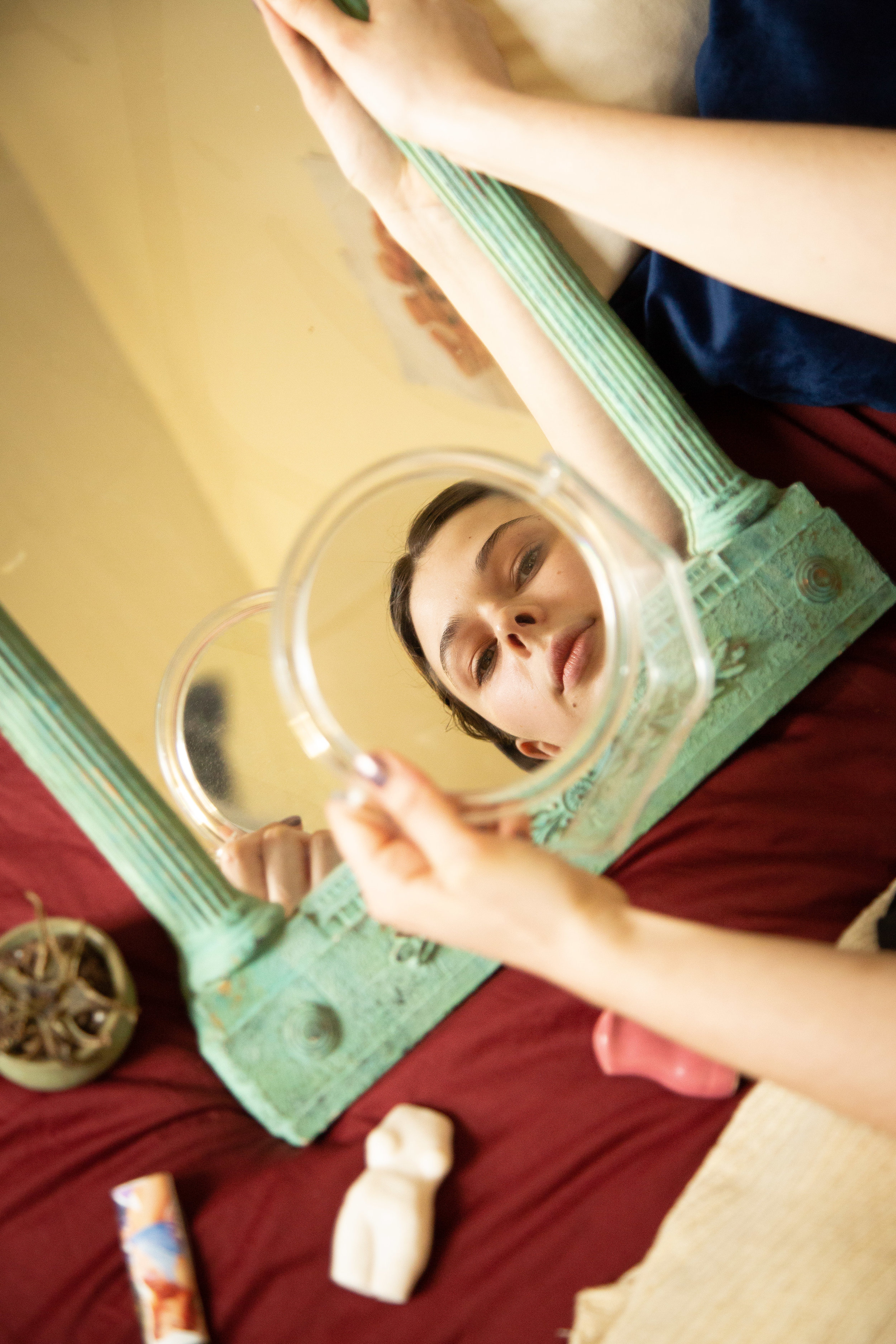
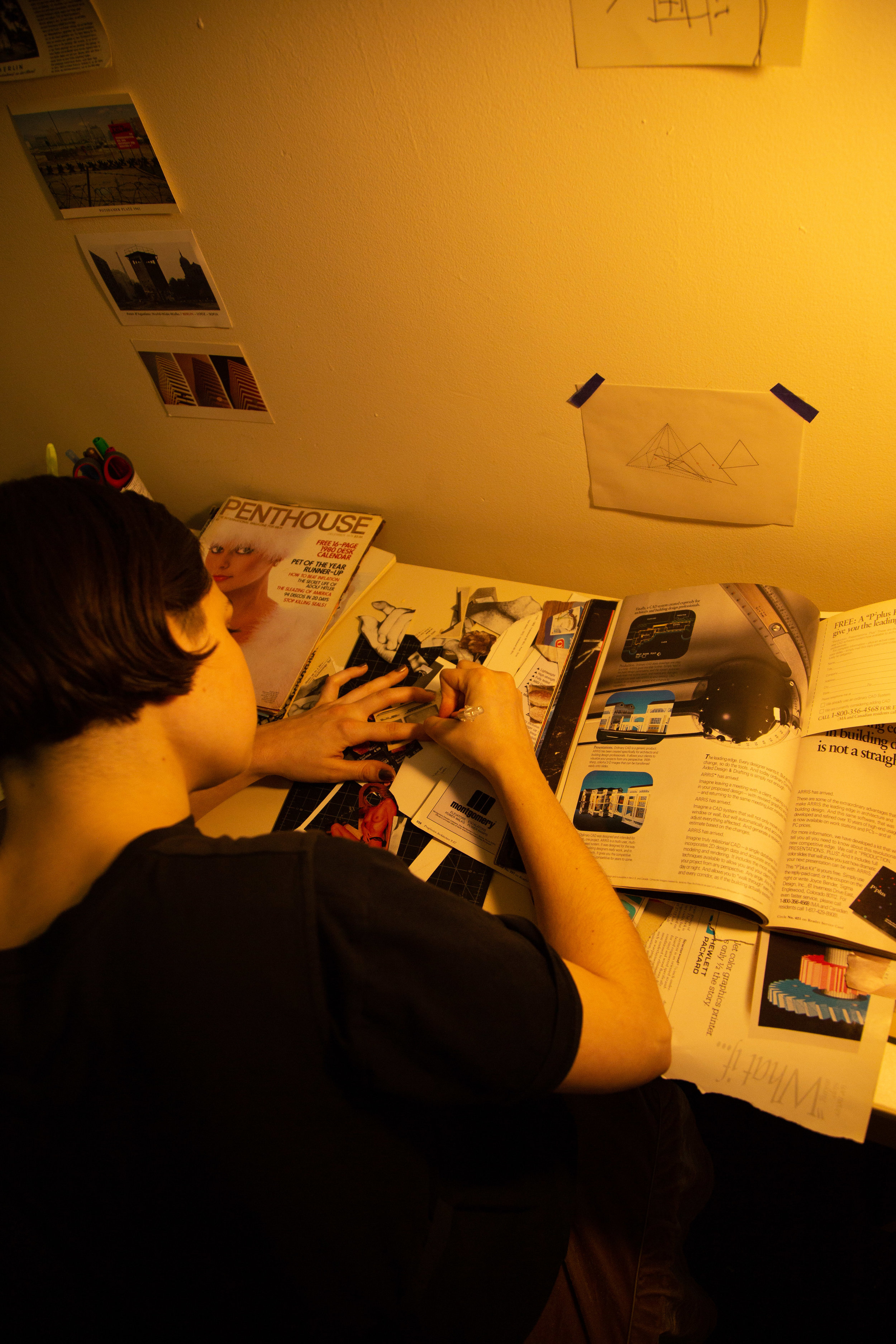
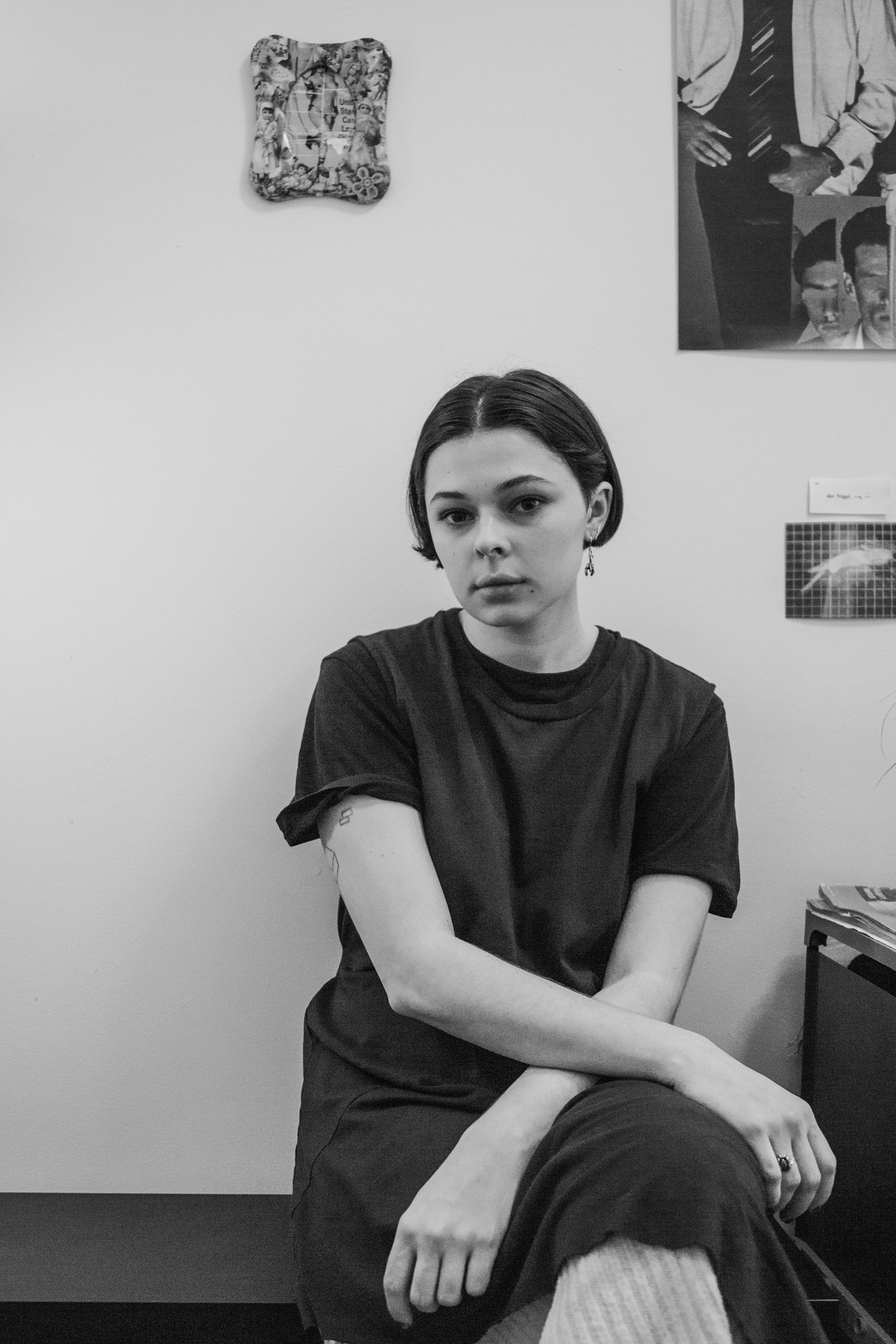
Photographs by Pedro Damasceno
Interview by Uma Halsted
Introduce yourself.
I'm Sarah. I grew up in South Carolina. I study urban studies and public health as a senior at Barnard. I have a big family. I have a pet python -- not here, unfortunately. I love to bake, and I like mid-twentieth century country music, like anything from Hank Williams to Patsy Cline to Kitty Wells. I do a 30s and 40s country music show for WKCR. And I make collages.
What are you a part of on campus and in New York?
I'm really not a part of many things on campus per se. I've been programming for WKCR since my first year, and that’s been consistent, but I like to get away from the bubble of Morningside Heights. I'm a bit separated from campus, I left for my whole junior year to study at Freie Universität Berlin and came back this year.
Outside of campus, I'm involved in the harm reduction community of New York. I work at the Lower East Side Harm Reduction Center, which is a needle exchange downtown in the Lower East Side/Chinatown. Same with Berlin, I was working in a needle exchange van there, with this group Fixpunkt, so I would say that larger sphere of harm reduction is what I'm a part of.
How did your time in Berlin shape your art?
I really didn't start collaging until I got to Germany. I guess the winter came, and I had to figure out a coping mechanism or a way to kind of track my mental, physical, and emotional health, channel it into something. And in Germany in the winter, the sun sets at like 3:45 pm, so everyone lives mostly in darkness, indoors.
My collaging was totally shaped by being in Berlin. There are lots of these secondhand bookstores in the city that sell old magazines, books, newspapers, and the like. I picked up a couple things at one of these shops, just because I like images and old things. Then I began thinking about the images and texts through a different lens and found that it was a good channel to develop my creative thoughts.
Berlin for me was extremely conducive to creating. The cost of living there is relatively low, compared to New York, so the quality of life is has the potential to be higher. And the stress culture is different. There’s no living on campus; everyone commutes. University is not your entire life. So I had a lot of time to work on my art. Outside my windows was a Friedhof, a little forest-y park/ graveyard. Just having windows not blocked by other buildings and actual nature sounds, it's very conducive to understanding oneself and one’s creative process. So I think it entirely shaped the way I create.
I was also surrounded by other artists and creative people constantly. There’s this amazing queer haircutting project called Butch Cut, run by Hank Bobbitt, who does donation-based haircuts for queers in Berlin. I was baking for their events while living in Germany and participating in the larger community of queer artists and performers who flocked to Butch Cut. And I worked at a record store/ cafe/ performance space called Rita Records, where I was also a baker, and constantly meeting exceptional people who inspired my work.
Describe an early moment of creating when you were young. What did you produce?
The earliest one that I can remember is from my house in Florida. I was born in Florida, but I always say I grew up in South Carolina because I moved there when I was six. I don't necessarily remember Florida all that much. But one of my first memories of creating is from there.
My parents' house was this small, one-story house. It was basically just a big square, and the rooms were reflected in that as well. And one side of the house had all of these sliding glass doors, because the house used to be an indoor pool. And so we would paint on the sliding glass doors and wash them off when we were done. Thinking about it now, it's very interesting because I love transparent things and negative space and light.
Have any specific life experiences shaped your personal view of or the way you want to create your work?
I try to channel my disability and queerness through my art, and I guess it's been interesting to think about because it was never my initial intention to focus on the body. But it subconsciously becomes nearly every single piece of art that I create.
As someone who's chronically ill, it feels like my body is violating me constantly. I've had chronic intractable migraine for a decade now, and that's the way I know how to function. I realize that it's this constant process of feeling like I'm not in control of my body, but there's a way to sort of channel that through ascribing these futures to the body and projecting myself onto the work that I'm doing. This violation has forced me to think about flesh in other ways and investigate the body as a site of potentiality.
And also with queerness. Growing up in the South as a queer person was not the most comfortable, so that also created a feeling for a long time of another violation of the self. And so I sort of subconsciously try to channel those things. I think it's just that the images that I end of creating are focused on the body. But being chronically ill and queer have shaped sort of how I create, definitely.
Do you think that exploring the body in your work is an act of giving yourself back control of the body?
Totally. It’s the same reason I like having tattoos on my body. When you exist in a body that you can't control -- and me it's like ninety percent of the time I can't control it -- you are forced to seek agency in other ways. And I'm attracted to images of the body. So a lot of the magazines and things that I've collected over years have to do with the body in some way. I have old Playboy magazines, and I have amazing German magazines on Freikörperkultur [free body culture], books on body language, anatomy.
Are you drawn to other subjects?
Besides bodies I'm drawn to shapes and architecture. The other thing I have a lot of is old German architecture magazines from the 60s. There's this sort of order and disorder playing with each other in my work, and it's a way of being able to give myself calculated control and calculated loss of control in some way.
When I'm doing a piece, it's not really planned out. I'm like a collector of images. I have these clippings all over, hundreds of hundreds of things. I have an entire miniature bookshelf of magazines I use. There's just images everywhere. And if I see something that I like, whether it's the texture of it or the color of it or the image itself or a shape or angle, then I'll kind of put it on my desk. And I go through this process of reacquainting myself with all of the images that I have. So it's kind of this puzzle. And as my week or my month goes on, and I think more about the images subconsciously.
With this work of mine, I had these two images, these two eyes, for a really long time. And they were sitting on my desk, and I had no idea what to do with them. And I had this other large piece from Life Magazine 1940 with these people building a house that I wanted to do something with. I hadn't looked at the Life Magazine one for a really long time, and I kept looking at those eyes. I had a piece of cardboard, and then it just kind of came together.
I was actually really sick when I was doing the piece of work. When I'm really sick, because my body is not functional, I feel like maybe my vision will be functional, or I can do something that can translate like my bodily feeling onto a piece of art. And that actually is a big part of the process, being able to dissociate from the images that I've been looking at for a long time. So it's disconnecting myself from the image and then being able to reconstruct it in some way.
Why collage? What is the power of repurposing text and image in the work you create?
That's a good question. We consume images constantly; that's what human beings do. I have a lot of anxiety around over-stimulation, especially in this city, and I think that translates into my work. I want to be stimulated in a way that's somewhat controlled but still allows me to give myself up to a something. I can construct something that is supported by the existence of another image, shape, or color. I do other things; I do a little bit of sculpture and stonework. But I think collaging, it's an expression either an emotion or bodily feeling. But it kind of seems like the easiest way for me to control what I'm seeing and have it make sense to me.
Your also taking from and reusing images that originally had different intentions attached to them. Do you think that gives you more agency?
Yes. The ability to pair images with other images to reconstruct meaning or reconstruct how something looks is powerful--being able to look at something and pair it with all of these other shapes and angles and texts and different geometry and things that can come together to mean something totally different.
Can you elaborate on your use of negative space in your artwork, as you discussed in your artist's statement?
In a lot of collaging, you use negative space to play on existing forms. It's a way to layer images and be able to have space between them. One of my pieces, it's this piece that's sewn together with bookbinding wax thread, and it's a bunch of these little pieces of paper, and it's sort of collapsable in your hand.
The interplay of spaces is really thrilling, and also something that I was doing a lot of in Germany. Because they have have amazing print shops there that are very cheap, and there're tons of artists, I was printing a lot of my collages on transparent paper. I gave them all away, because it was mostly just an experiment to start. But that added another element of negative space, as being able to look at something with the background of whatever's in front of you - and also how it plays with light and movement. I like to make hanging things and things that move, like this piece used to be up on my wall near my window in my bedroom in Germany. And it would just sort of sway constantly.
What space do words hold in your collages?
Less now, but when I was living in Germany, words played a huge role in my work because my life was in this constant state of translation and moving between languages. I was studying at the university solely in German, working solely in German. But then I would come home to my partner, who I was speaking English with, and with some of my German friends or friends who spoke German, we would speak what they call “Denglisch,” this mixture of English and German.
In German the nouns are really amazing, and in English, you have better adjectives. Certain German words would stick out to me when I was there. You ascribe meaning to words when you're learning a language or getting better at communicating in a language. I went to Germany already speaking a good amount of German, but never having lived in a German-speaking country for more than a month. So I didn't know how to function in German yet.
Also a lot of the collaging materials I was getting were in German. One of the first pieces that I did there- it was this really small little piece with a woman in two planes, and it said "isoliert" (isolated), and it had an exclamation point, and it was from some advertisement. But I really liked the text.
Language occurs in this weird kind of liminal space, when you're living somewhere that people aren't speaking your native language, and you're communicating sort of half of your life in German and half in English. It kind of lends itself to language being important. I probably used about half and half English words and German words in my art. In the beginning, I wasn't sure if I wanted to incorporate words or if I felt that need to at all. But there were so many interesting words in German that I had some attachment to, or that I or people around me would use frequently. So it kind of lent itself to this interesting combination. The pieces I produce now tend to have less words.
Which artists are you most inspired by?
One of my favorite artists is an Austrian artist whose name is Valie Export. She's in her seventies now, but she was big in this movement called Viennese Actionism. She makes these amazing films where it's like constant image manipulation. She has this one, and I think the English title of it is "Invisible Adversaries." It's similar to Sci-Fi; it's very experimental. But I just love consuming her images.
There's this collective in Berlin that I'm very inspired by called the Objects of Desire Collective. It's a sex worker-led collective, and I became really close with the curators of this big project, when I was baking for Butch Cut. They're putting on a really big show at the Schwules Museum in Berlin, which is the first gay museum in the world . They collect objects from sex workers and stories from sex workers themselves, so it's like archival work and narrative work, and it's really powerful.
Some of my other favorite artists are David Henry Nobody Jr., Emma Kohlmann, Milf City (formerly Lance Romance), and dollargenderstore.
What's the last song you listened to?
I actually listened to a great song this morning. It's called "Marry the State" by this Berlin band called Gesture. And it's a really amazing synth-punk song. Super good.
Do you have a favorite movie or book?
That changes all the time. I do have a favorite book; it's Near to the Wild Heart by Clarice Lispector. She's maybe my favorite author. My favorite film changes constantly. But one that's stayed pretty consistent is by this artist Valie Export. Invisible Adversaries is the film.
Describe yourself in three words. Describe your work in three words.
Empathetic, deliberate, unstructured. Bodily, communicative, reflective.





























